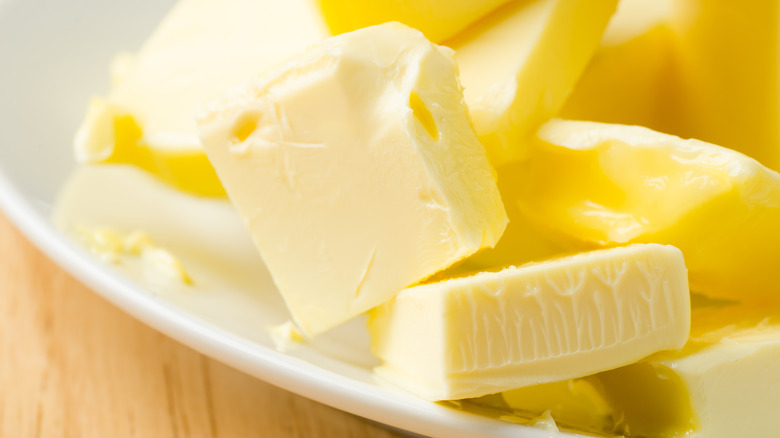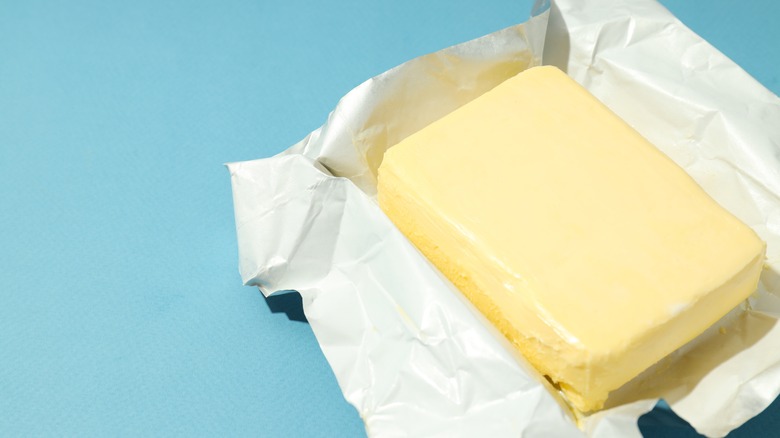When Softening Butter, Patience Is Key
If you're not in the habit of keeping a butter dish on your counter, softening butter when you need it can seem like a time-consuming hassle. However, the best way to achieve perfectly softened butter is to let it do its thing at room temperature. Not only does this ensure your butter is evenly soft, but it removes the risk of over softening, which can create air bubbles in baked goods, causing them to collapse.
When softening a stick of butter, always set it standing up, not lying on the side. This helps speed along the process by exposing more of the stick to warm air. Using this method, butter should be softened within 30 to 40 minutes, depending on how warm your kitchen is. Alternatively, you can cut the butter into slices and set them in a single layer on a plate. This will soften the butter in about 15 minutes, but it is a bit messier than keeping the stick whole.
While waiting for your butter to soften, you can use the time to get all your other ingredients ready and preheat your oven, which will also aid in softening your butter by increasing the temperature around it. Just make sure not to set the butter directly on the stove because this can make a serious mess. Softened butter should be between 60 and 65 degrees Fahrenheit, which you can check with a thermometer. In place of that, you can check if your butter is soft enough by pressing it with your finger or a spoon. You should be able to leave an indent without sinking too deep or the butter losing its shape.
Other ways to soften butter and why it's important
Although softening butter upright at room temperature will give you the best results, you're not out of luck if you really need it done quickly. For example, Mary Berry's butter-softening technique involves cubing cold butter and placing the cubes straight into a bowl of warm water for 10 minutes. Another method is to put cold butter between parchment paper and beat it with a rolling pin. Not only is this a great stress relief, but the friction will warm the butter and soften it.
Of course, you can also use the microwave, but we'd suggest this only if you have no other option. You'll want to use the lowest possible power setting for only 15 seconds. Pay close attention because every microwave is different, and butter can melt very quickly. Although you can use ice cubes to salvage butter that is too soft, that takes even more time and defeats the purpose of using a quick method.
Now, you might be wondering why softening is necessary in the first place. Well, while cold butter is great for biscuits and baked goods with flaky layers, it isn't a substitute for softened butter. This is because many baking recipes rely on creaming, whipping fat and sugar to a fluffy consistency. Soft butter is essential to this process because it can be aerated, resulting in a light and soft baked treat. If the butter is too warm, it won't hold its form when aerated, and the final product will collapse. Likewise, cold butter is too hard to cream and won't blend evenly with the sugar.

